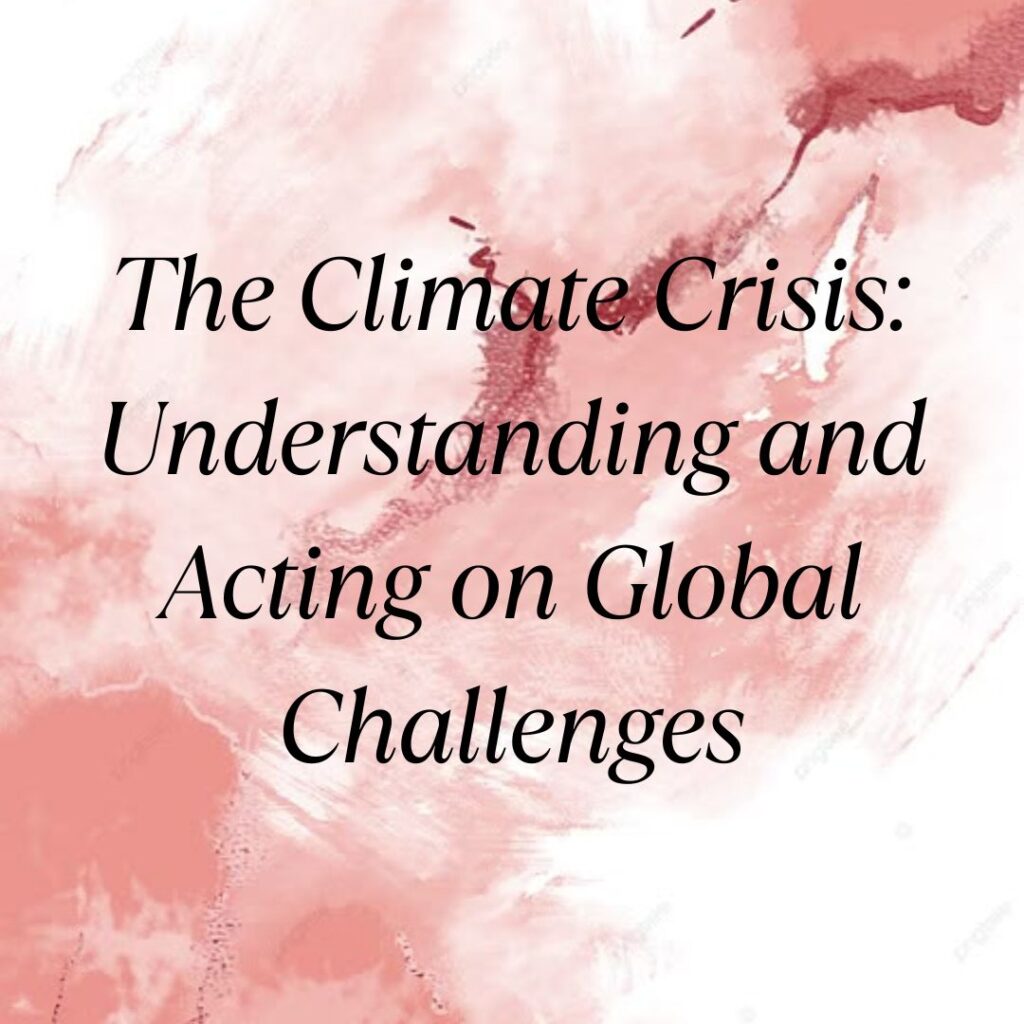Welcome to Riya’s Blogs, where we dive deep into pressing issues and explore solutions that can make a difference. Today, we’re tackling one of the most urgent global challenges of our time: the climate crisis. With rising temperatures, erratic weather patterns, and environmental degradation affecting every corner of the globe, it’s crucial to understand the climate crisis and how we can act to mitigate its impacts.
What is the Climate Crisis?
The term “climate crisis” refers to the profound changes in global climate patterns, primarily driven by human activities. This crisis is characterized by the increase in average global temperatures, the rise in sea levels, and more extreme weather events, such as hurricanes, heatwaves, and droughts. The primary driver of this crisis is the accumulation of greenhouse gases (GHGs) in the Earth’s atmosphere, which trap heat and disrupt the natural balance of our climate system.
Key Drivers of the Climate Crisis
- Greenhouse Gas Emissions: The burning of fossil fuels—like coal, oil, and natural gas—releases significant amounts of carbon dioxide (CO2) and other GHGs into the atmosphere. These gases enhance the greenhouse effect, leading to global warming.
- Deforestation: Forests act as carbon sinks, absorbing CO2 from the atmosphere. When trees are cut down for agriculture or urban development, the stored carbon is released, exacerbating climate change.
- Industrial Activities: Industrial processes contribute to GHG emissions through energy consumption and the release of pollutants. Manufacturing, mining, and agriculture are major contributors to the climate crisis.
- Agricultural Practices: Modern agriculture, including livestock farming, produces methane (a potent GHG) and involves the use of synthetic fertilizers and pesticides, which can lead to further environmental damage.
- Waste Management: Landfills and waste treatment facilities emit methane and other harmful gases. Poor waste management practices can also result in environmental pollution and degradation.
The Impact of the Climate Crisis
The impacts of the climate crisis are far-reaching and multifaceted. Here’s how it affects different aspects of our world:
1. Extreme Weather Events
One of the most visible impacts of climate change is the increase in extreme weather events. Hurricanes are becoming more intense, heatwaves are more frequent, and heavy rainfall is leading to more severe flooding. These events not only cause immediate harm but also have long-term effects on communities and ecosystems.
2. Rising Sea Levels
As global temperatures rise, polar ice caps and glaciers are melting, contributing to rising sea levels. This threatens coastal communities, leading to erosion, flooding, and the displacement of millions of people. Low-lying areas are particularly vulnerable to these changes.
3. Ecosystem Disruption
The climate crisis disrupts ecosystems by altering temperature and precipitation patterns. Species that cannot adapt quickly enough face extinction, while invasive species may thrive and outcompete native flora and fauna. This imbalance affects biodiversity and ecosystem health.
4. Impact on Agriculture
Climate change affects agricultural productivity through altered growing seasons, shifting weather patterns, and increased frequency of pests and diseases. This can lead to food shortages, higher prices, and economic instability, particularly in developing regions.
5. Human Health
The health impacts of the climate crisis are significant. Increased heat can lead to heat-related illnesses and deaths, while changes in weather patterns can influence the spread of vector-borne diseases, such as malaria and dengue fever. Air quality issues related to pollution and wildfires also pose health risks.
How Can We Act on the Climate Crisis?
Addressing the climate crisis requires collective action and commitment from individuals, communities, businesses, and governments. Here are some key strategies for mitigating and adapting to climate change:
1. Reduce Greenhouse Gas Emissions
- Transition to Renewable Energy: Embracing renewable energy sources like solar, wind, and hydropower reduces our reliance on fossil fuels and cuts GHG emissions.
- Improve Energy Efficiency: Adopting energy-efficient technologies and practices in homes, businesses, and transportation helps lower energy consumption and emissions.
- Support Sustainable Practices: Choosing products and services that prioritize sustainability, such as those with eco-friendly packaging or certifications, can make a positive impact.
2. Promote Reforestation and Conservation
- Plant Trees: Reforestation projects and tree-planting initiatives help restore lost forests and enhance carbon sequestration.
- Protect Natural Habitats: Conserving existing forests, wetlands, and other critical ecosystems preserves biodiversity and mitigates climate impacts.
3. Adopt Sustainable Agricultural Practices
- Support Sustainable Farming: Encouraging practices like organic farming, agroforestry, and reduced use of synthetic chemicals helps maintain soil health and reduces emissions.
- Reduce Food Waste: Minimizing food waste at all stages—from production to consumption—reduces the environmental footprint of agriculture.
4. Enhance Waste Management
- Reduce, Reuse, Recycle: Adopting the 3Rs helps manage waste more effectively and reduces methane emissions from landfills.
- Support Circular Economy: Promoting a circular economy model, where products are designed for reuse and recycling, reduces waste and resource consumption.
5. Advocate for Policy Changes
- Support Climate Legislation: Advocate for policies and regulations that address climate change, such as carbon pricing, emissions reduction targets, and investment in green infrastructure.
- Participate in Climate Action: Join local and global movements that aim to raise awareness and drive climate action, from community clean-up events to international climate strikes.
Conclusion
The climate crisis is a complex and urgent issue that requires a multifaceted approach to address. By understanding its causes and impacts, we can make informed decisions and take meaningful actions to mitigate its effects. Whether through personal choices, community initiatives, or advocating for systemic change, every effort counts in the fight against climate change.







